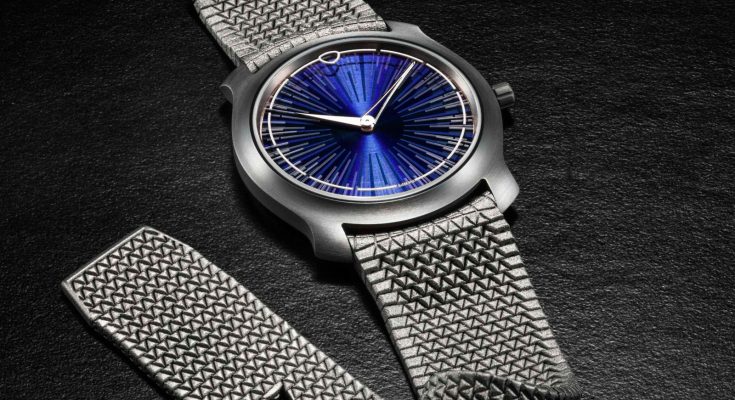Want a watch strap that’s as comfortable as fabric, as light as rubber, as strong as a metal bracelet, and as tactile as a Milanese mesh?
Any watch fan looking to tick all of the above boxes would normally expect to be a dab hand with a spring bar removal tool to experience all the above individually, but a new strap developed by Malaysian independent brand Ming appears to now offer the best of all worlds.

Photograph: Courtesy of Ming
The one strap to rule them all has been dubbed the Polymesh. It is 3D-printed from grade 5 titanium and comprises 1,693 interconnected pieces (including the buckle), held together without any pins or screws. The only additional parts requiring assembly are the quick-release spring bars at each end that attach it to the watch—the articulated pin buckle is also formed in the same process.
Ming says the strap, made up of rows of 15 equilateral triangles meshed together and bookended by larger end pieces, “has more motion engineered into the radial axis than the lateral one,” leading to a supple end result that drapes like fabric yet retains the strength of titanium.
It has taken the company seven years to develop, working with partners Sisma SpA in Italy and ProMotion SA in Switzerland. Ming says notable challenges included the risk of components fusing together, and the fact that powdered titanium—the raw material from which the strap is laser sintered—is highly explosive.
Ming watches co-founder Ming Thein says the project used filament 3D printing initially, before settling on laser sintering, to create larger 5:1 and 3:1 models from plastic to determine if the developing design was valid. “After going through more than seven different topologies to figure out something that would both 3D print and [be] something that would feel right and have the right kinetic properties, we finally settled on the answer,” Thein says in a YouTube video.
Amazingly, as the bracelet and buckle must be printed as one unit, Ming had to deal with producing a strap design that demanded clearances of less than 70 microns, the average thickness of a human hair. As a result, each strap takes several hours to produce, requiring hundreds of layers of additive manufacturing in an inert gas environment.
The company is not the first to use 3D-printing techniques for final products in watchmaking (as opposed to prototyping), but it is the only one using it for straps or bracelets. British start-up Apiar has debuted a 3D-printed watch case, as has Dutch brand Holthinrichs, which has created versions of its Ornament 1 in both 18-karat gold as well as stainless steel.
The Case for Straps
To the extent that straps have been an area for innovation in the watch world, recent attention has tended to focus on brands’ development of proprietary mechanisms for swappable straps, to varying degrees of success and popularity. Sustainability programs have focused on leather alternatives such as reclaimed apple peel or mushroom-based material, or textiles woven from ocean plastic. Some have proven difficult to industrialize, and nearly all have been dogged by accusations of greenwashing.

Rolex’s 2015 Oysterflex strap featured an elastomer virtually indistinguishable from rubber with thin blades of titanium-nickel alloy embedded within it for strength.
Photograph: Stojan & Voumard/ Rolex



